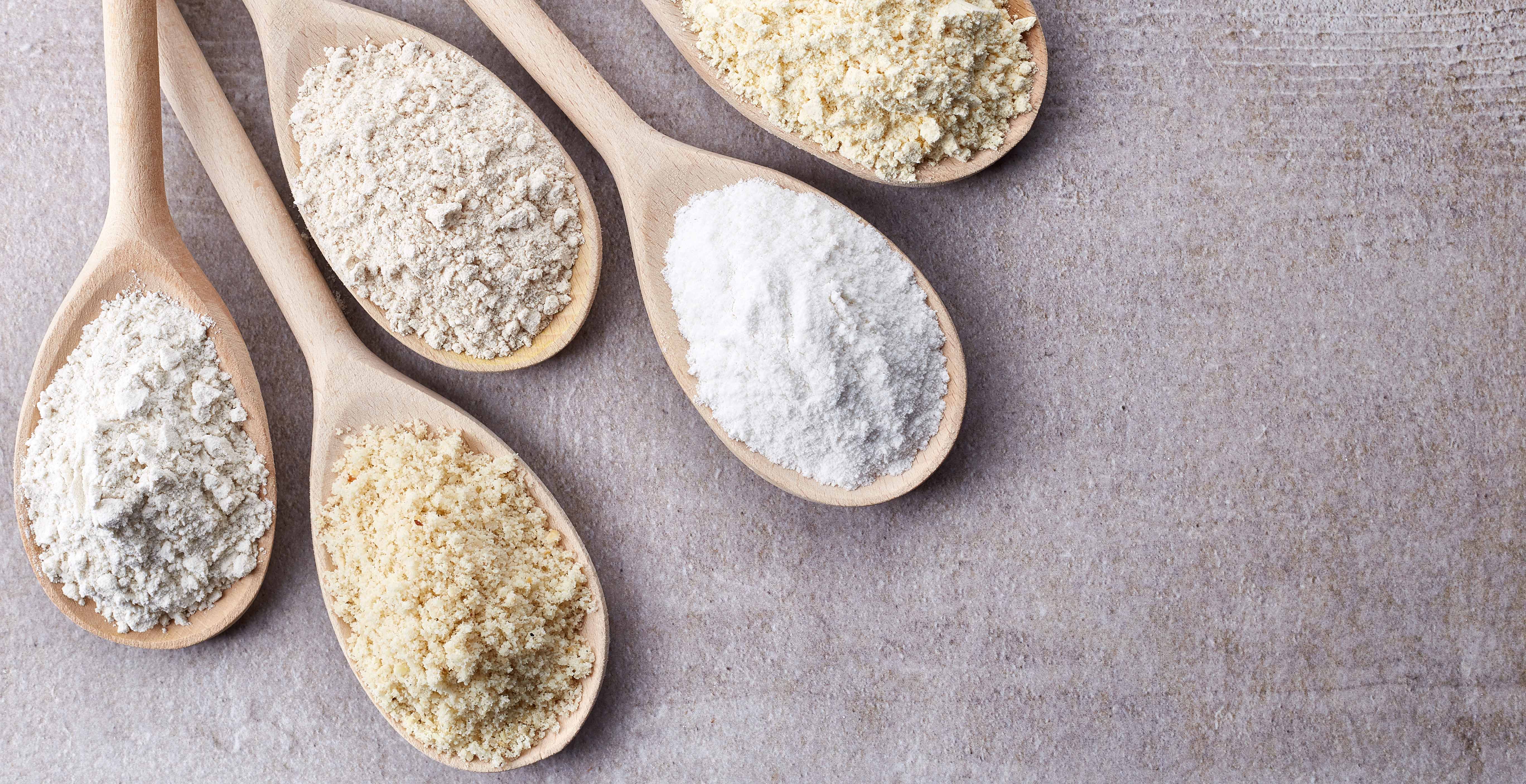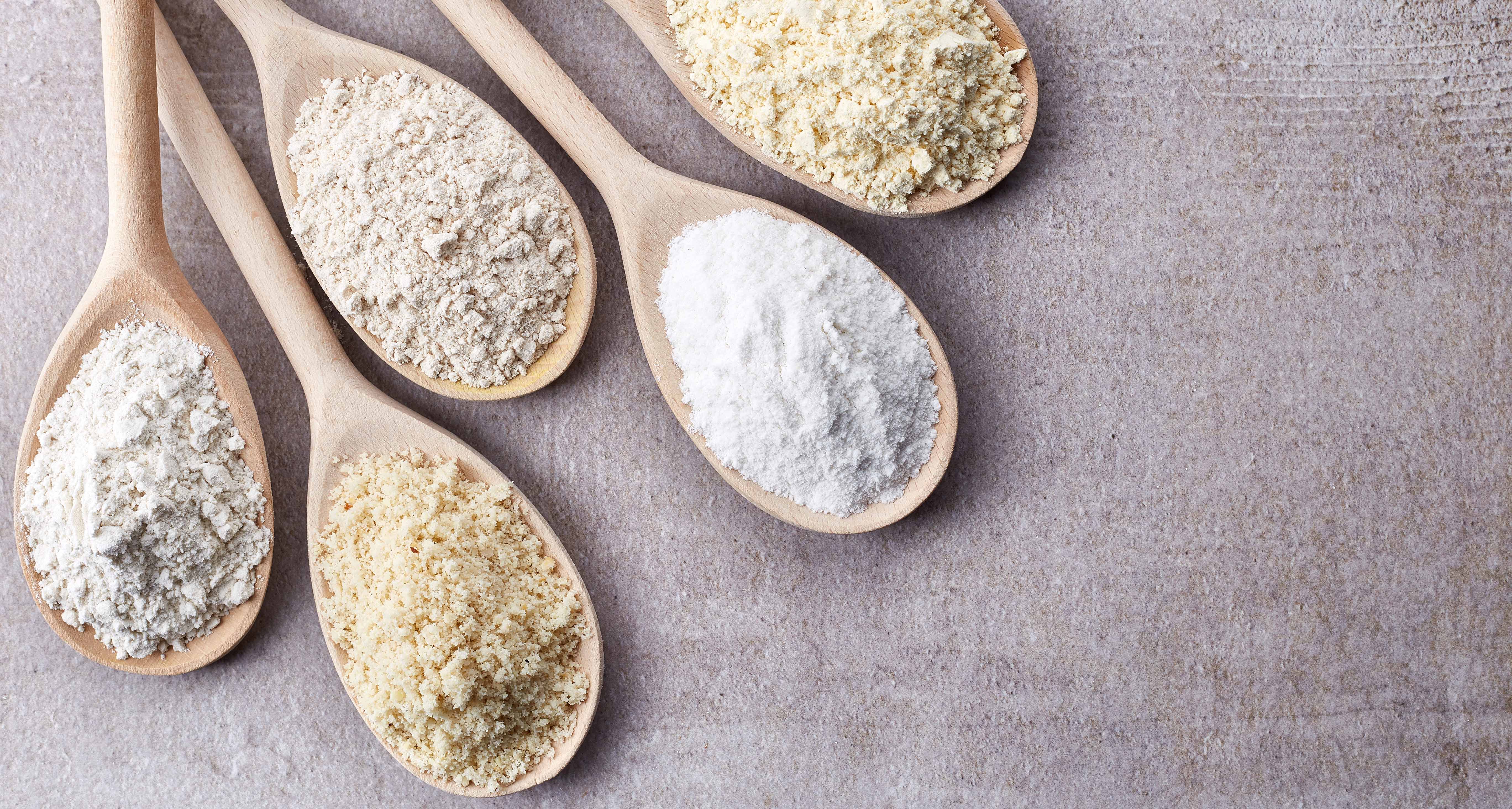Focus on Flours


Whipping up a batch of vegetable fritters? Baking a dozen gluten-free muffins? Interested in making handmade pasta? Whether you’re seeking the ultimate rise or a nutrient-dense alternative to all-purpose flour, you’re in luck! There’s never been a better time to find the best flour possible for your needs. Never balk in the baking aisle again; it’s time to get flour empowered!
Self-rising flour
Unless you’re an avid baker you most likely won’t have self-rising flour sitting around in the pantry. An essential component in recipes for quick breads, pancakes, and biscuits, self-rising flour can be found premixed or you can easily make it at home by combining regular all-purpose flour with baking powder and salt. The combination of flour and leavening agent results in ultra-light baked goods just be sure to buy or make self-rising flour in small amounts since it has a shorter shelf life than regular all-purpose flour.
Whole-wheat flour
Whole-wheat flour is made from whole wheat berries that have been finely ground (wheat berries are the super nutrient-packed actual whole grain of wheat). In fact, whole-wheat flour is an excellent source of B vitamins, calcium, folic acid, copper, iron, zinc, and dietary fibre. Thanks to the natural oils found in the wheat berries, whole-wheat flour is highly susceptible to spoilage and should ideally be stored in the freezer. Whole-wheat flour can be substituted in many recipes calling for all-purpose flour (although it’s important to experiment with flour ratios, as whole-wheat flour will result in denser baked goods).
Chickpea flour
Chickpea flour is a fantastic gluten-free flour option that also happens to be rich in protein and fibre. In Italian and French cuisines chickpea flour is used to make a polenta-like dish and it’s used as an effective binder and egg-like substitute in Indian and Moroccan dishes. Look for chickpea flour in the international section of your local grocery store or buy it online (search for “gram flour” for best results).
Oat flour
Oat flour is made from oats that have been finely ground into a powder. Although oat flour can be considered gluten-free, it’s important to check for labeling that indicates gluten-free status (oats are a frequent source of gluten cross-contamination and can potentially pose adverse health risks to those suffering from celiac disease). Oat flour is particularly useful in muffins, cakes and other quick breads thanks to its light texture and mildly nutty flavour.
Spelt flour
Spelt flour can be used as a more nutrient dense substitution for regular whole-wheat flour. Because it contains gluten the texture and structure of your baked goods won’t suffer as a result. While spelt flour can be used in a 1:1 ratio in place of whole wheat flour it’s important to keep in mind the fact that its gluten needs less time to break down in a recipe (in other words, keep a light touch when subbing spelt flour for regular flour!).
Semolina flour
Semolina flour might sound unfamiliar, but chances are you’ve encountered this hearty flour in the form of pasta or couscous. Semolina flour is made from the ground up endosperm of durum wheat and is very high in gluten, making it perfect for baked goods that have a crispy, chewy mouthfeel. Semolina flour is also a popular choice for creamy dessert recipes such as custards and puddings and for its ability to produce an exceptionally light crumb in cakes.
Whipping up a batch of vegetable fritters? Baking a dozen gluten-free muffins? Interested in making handmade pasta? Whether you’re seeking the ultimate rise or a nutrient-dense alternative to all-purpose flour, you’re in luck! There’s never been a better time to find the best flour possible for your needs. Never balk in the baking aisle again; it’s time to get flour empowered!
